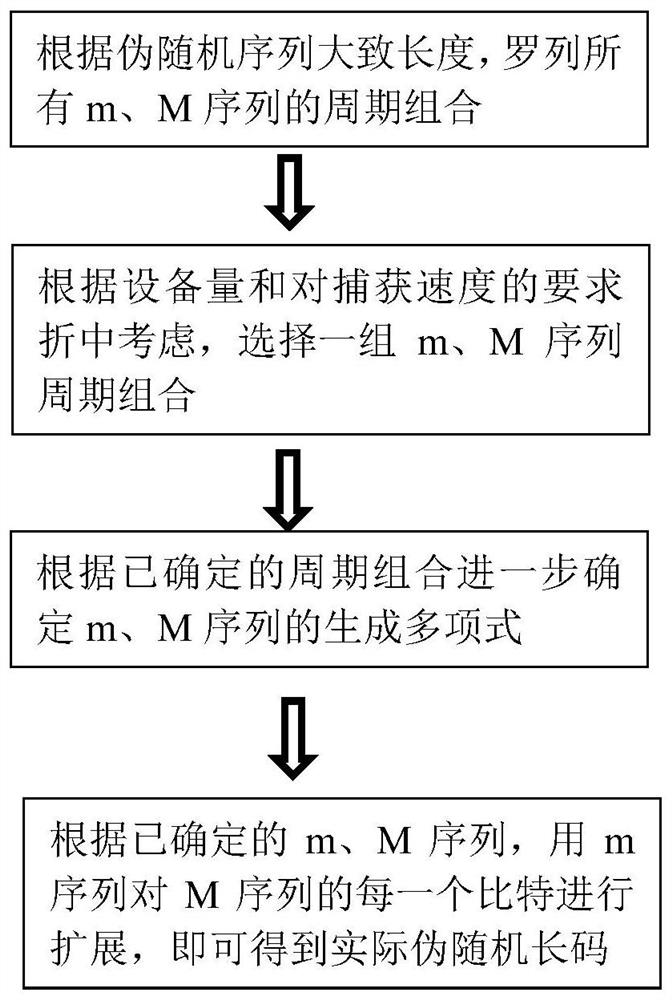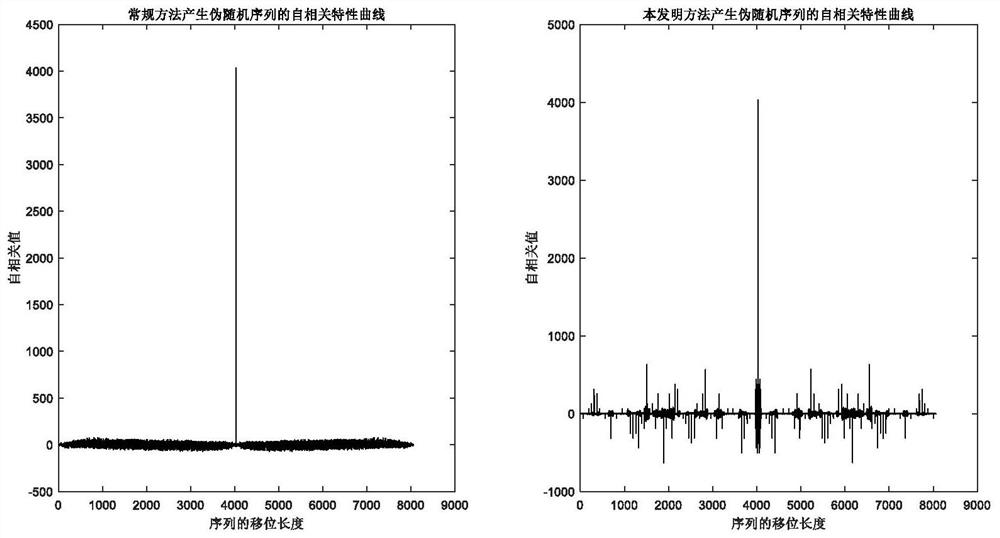A method for generating pseudo-random long codes
A pseudo-random and pseudo-random sequence technology, applied in the field of pseudo-random long code generation, can solve problems such as large hardware resources, application limitations, and complex hardware equipment at the receiving end, and achieve the effect of reducing hardware resources and reducing the complexity of hardware implementation
- Summary
- Abstract
- Description
- Claims
- Application Information
AI Technical Summary
Problems solved by technology
Method used
Image
Examples
Embodiment Construction
[0019] Below in conjunction with accompanying drawing, further describe the present invention through embodiment, but do not limit the scope of the present invention in any way.
[0020] The invention provides a method for generating a pseudo-random long code, that is, the multiplication of m and M sequences is used as the pseudo-random long code.
[0021] figure 1 It is a flow chart of the method steps of the present invention. The following embodiments adopt the long-period pseudo-random sequence generated by the method of the present invention as the pilot sequence of the burst communication system, and the length of the pilot sequence is about 4000; the specific implementation of generating the pilot sequence includes the following steps:
[0022] Step 1, according to the approximate length of the pilot sequence, list the periodic combination pairs of all m and M sequences (the period of the m sequence is expressed as N 1 = 2 m -1, the M sequence period is expressed as ...
PUM
 Login to View More
Login to View More Abstract
Description
Claims
Application Information
 Login to View More
Login to View More - R&D
- Intellectual Property
- Life Sciences
- Materials
- Tech Scout
- Unparalleled Data Quality
- Higher Quality Content
- 60% Fewer Hallucinations
Browse by: Latest US Patents, China's latest patents, Technical Efficacy Thesaurus, Application Domain, Technology Topic, Popular Technical Reports.
© 2025 PatSnap. All rights reserved.Legal|Privacy policy|Modern Slavery Act Transparency Statement|Sitemap|About US| Contact US: help@patsnap.com


